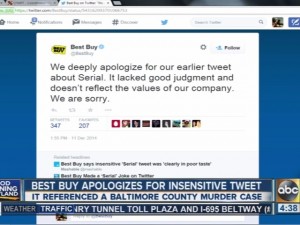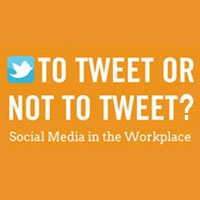With the rise of technology in the past several decades, businesses and universities have been faced with a new challenge: distinguishing themselves in an age of rapid globalization. With an increased consumer market comes an increased competition for business. Therefore, a blog is a valuable resource for distinguishing a business or university against the competition because it can make the represented agency accessible and human.
Regardless of their physical location, any one with internet access can read a blog, no matter where the blogger posts from, or lives. When the blog represents a particular business or university, these corporations suddenly become more accessible to a larger audience, as “Google ranks blogs higher in its search results than static pages[.]“ Due to their dynamic nature, “[A] blog can increase a company’s visibility and its brand recognition. Through the blog posts, a company can also connect with its customers and suppliers to share information about products and offerings, generating leads for future business” (Nordmeyer).
More than just a method for increasing revenue, blogs are a way for multinational corporations to facilitate the dissemination of information to a wider audience without fear of language barriers or cost constraints. Many companies “[H]ave expanded their corporate blogs to other locations and made them available in other languages” (Strother, Zohra, and Millsap). Previously restricted by and/or faced with the expenses of physically printing numerous translations of singular content, the virtual nature of blogs allows a company to share their knowledge, research, and observations in a potentially limitless array of languages at a much lower cost.
But the value of corporate blogs does not exist solely in their accessibility. They are also a simple and effective system of humanizing an otherwise inhumane entity, of giving a voice to the company they represent, and of encouraging “[V]aluable feedback from their customers” (Strother, Zohra, and Millsap).
Take, for example, two of the Kodak blogs discussed in the Strother, Zohra, and Millsap article. One blog “Allows Kodak to share stories about the power of imaging and invites the audience to do the same,” while the other “[F]ocuses on sharing expertise about ‘digital imaging’s technologies and its power to influence our world’” (Strother, Zohra, and Millsap). They provide their consumers with an outlet to share and discuss their positive Kodak experiences, and a forum for the Kodak company itself to share anecdotes of their helpful and informative contributions to society. These blogs—and forums—in turn, transform an unfathomably large, capitalist business into a nurturing community, populated with concerned, compassionate individuals who want nothing more than to hear the stories of their consumers.
Some might argue that blogs are detrimental, rather than beneficial, to corporations. And while it is true that “Aside from potentially revealing trade secrets and confidential corporate information, bloggers could expose the corporation to suits for defamation or for infringement of intellectual property rights,” the rewards greatly outweigh the risks (Strother, Zohra, and Millsap). The potential hazard of leaked information or lawsuits can easily be avoided with proper rules, regulations, and overviews, and should not deter corporations from starting a blog. These hazards should be negated by the opportunity to foster a meaningful relationship with consumers, to educate a larger audience, and to present the corporation with a distinct edge over the competition.
Nordmeyer, Billie. The Advantages of Blogs in the Workplace. The Nest. Web. 28 August 2014.
Strother, Judith A., Zohra Fazal, and Melinda Millsap. (2009). Legal and ethical issues of the corporate blogosphere. IEEE Transactions On Professional Communication, 52(3), 243-253.






